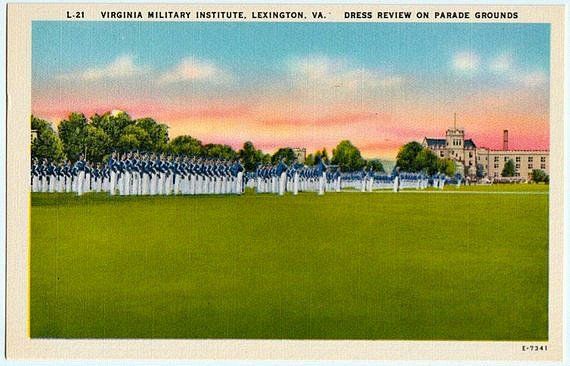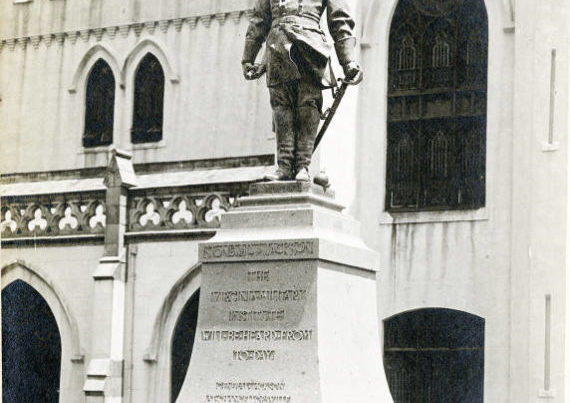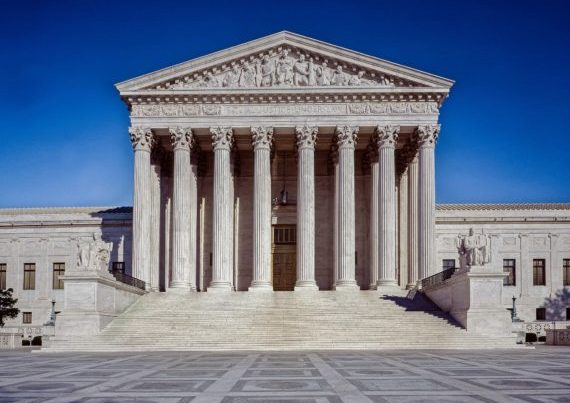On June 1, 2021, the Virginia Military Institute (VMI) – historic, meritocratic, renowned for rigor and its graduates’ service, and, for decades as color-blind as any institution may reasonably expect to be in a fallen world – may well have ceased to exist in a sense when the results of a Richmond-mandated investigation of so-called “structural racism” were released; and were received by the school’s leadership seemingly without objection. The report of the long-anticipated, (loud ahem), “independent” investigation – the culmination of 12 months of incessant attacks by several media outlets, including one writer at the Washington Post (with his own legacy regarding slavery to deal with), and a small number of alumni and cadets – rendered judgments against the school that were entirely predictable, and predicted, given the circumstances surrounding the investigation itself.
For readers whose attention has been elsewhere, blissfully unaware of the unfolding case study of how to implement cultural revolution against a small but highly-respected, Western-based institution, the investigation’s directive originated at Gov. Ralph Northam’s desk, or perhaps at the diversity office down the hall. The governor, VMI Class of 1981, whose own racial indiscretions as a younger man nearly drove him from office when they came to light in 2019, wrote a letter to VMI on October 19, 2020 in which he charged the school with “structural racism,” among other unsupported assertions of embedded, institutional injustices. Apparently forgetting the time-honored principles he had practiced as VMI’s honor court president – ironically, he lists this former status on his signature block as governor – Northam directed an independent investigation to determine whether or not what his letter had already asserted, was in fact the case. For this pointless effort, a Critical Race Theory (CRT)-embracing firm was paid $1 million of Virginia taxpayers’ money.
One hardly needs to go beyond the first paragraph of the report’s executive summary to grasp the essence of what has transpired. Of the four sentences in the opening paragraph, the first reads well enough: “The Virginia Military Institute, founded in 1839, is a historically important institution that has produced generations of respected citizen soldiers and leaders.”[1] Correct. But things quickly go downhill.
The next sentence begins the assault: “VMI has also traditionally been run by white men, for white men.” Let’s see now. . . . Could that statement reflect the reality that the prospect of four years at pretty much any military college, but especially one at which first-year, middle-of-the-night workouts, getting yelled at by upperclassmen, and various restrictions on daily life throughout one’s cadetship are part of the deal, is unlikely to appeal to most 18-to-22 year-old young women? (VMI first admitted female cadets in 1997.) Could it also reflect the reality that, historically, the majority of young men in this country happened to be white, and that black Americans have constituted no more than 15% of the populace? (VMI first admitted black cadets in 1968.) Given those realities, what could be more of a yawner than to observe (breathlessly) that VMI has been “run by white men”? Is there something inherently wrong with this?
What about the latter phrase, “for white men”? One may read this in two different ways: it could simply reflect the above-mentioned roughly one-in-seven-Americans-is-black reality; or, more problematically, it could imply that the white men who run VMI have designed a system whereby non-white men (and women) do not succeed, or at least not anywhere close to the rate of their white male “Brother Rats” (VMI classmates). The latter interpretation sounds suspiciously like the charge made by Governor Northam – the claim of “structural racism” – the rationale for the investigation itself. A yellow flag, for sure.
The third and fourth sentences remove any doubt as to the intended meaning of the CRT-imbibing special investigators:
VMI’s overall unwillingness to change – or even question its practices and traditions in a meaningful way – has sustained systems that disadvantage minority and female cadets and faculty, and has left VMI trailing behind its peer institutions. If VMI refuses to think critically about its past and present, and to confront how racial and ethnic minorities and women experience VMI, it will remain a school for white men.
Readers, please take note that when CRT-informed individuals or entities use terms such as “critically” or “structural racism” (above, and in Northam’s letter), or “diversity, equity, and inclusion” (DEI, found throughout the report), they are using, as some have said, traditional vocabulary – but with their own dictionary. They refer to an ideological framework in which all whites are the “oppressors” and all non-whites are the “oppressed” – except those non-whites whose traditional high academic standards render them guilty of “whiteness” and thus condemn them to the oppressor class (mainly Asians or Asian-Americans). Such irrationalities stem from neo- or quasi-Marxist ideology, which divides society by class, race, ethnicity, or sex and stokes the enmity of the subgroups against one another as a convenient rationale for the movement’s leaders to take control, whether of governments or institutions. If any of this sounds unfamiliar or incredible, it’s past time to wake up and smell the coffee. Since the start of 2021, many more are doing so nationwide; CRT’s pernicious poison is now very well documented.[2] Recently, even a few (CRT-informed) BLM leaders have left the organization after realizing the “ugly truth” of the group’s views on the family and education.[3]
Returning to the report’s opening salvo, a number of questions or edits are called for. “VMI’s overall unwillingness to change” is both misleading and inaccurate. In July 2020, then-superintendent General (U.S. Army, retired) J.H. Binford Peay III announced a number of measured, well-reasoned changes in response to the recent charges of racism, which have been discussed previously on the Abbeville Institute site and elsewhere. It was those measured changes – already underway – that Northam’s October 19 directive undermined. “VMI trailing behind its peer institutions” is another bizarre claim – VMI consistently ranks near the top among small, public colleges in the nation (#4 nationally in a 2021 U.S. News & World Report ranking of public, liberal arts schools in the country). If “trailing behind,” however, is meant to suggest that minority and women cadets are somehow harmed by VMI’s structures and systems and so are unable to succeed, then the phrase seems nothing less than an expression of utter contempt for those VMI graduates who identify with a minority group. The investigators have dismissed broadly – with a wave of the supposed superiors’ hand – the accomplishments of VMI minority alumni in the past, which are considerable, extending to general/flag officer rank in the military for perhaps the most obvious fact that counters their claim. VMI’s new superintendent, retired U.S. Army Major General Cedric T. Wins (VMI 1985), is only one recent example that belies the report’s implications.
There have been plenty of others, including, notably, the first black graduates in the VMI Class of 1972. A Richmond Times-Dispatch article in 2018 highlighted the first four black graduates of VMI, quoting three of the four survivors who recalled that VMI’s racial integration was “uneventful” or a non-event. (Sadly, the fifth black cadet to enter the school in 1968 drowned in an accident following his freshman year.) Harry Gore, Jr., the first of the five black cadets to matriculate in 1968, and who went on to a successful U.S. Air Force career as a pilot – to include landing on every continent except Antarctica – said, “We were no different. . . . We all had the same hopes, fears, and aspirations.” In a panel held at VMI in 2019, Gore recalled, “They treated us the first year equally badly. And I say that in a good way. . . . There was no white and black. We were just RATS going through the same thing.” Another of the five, Dick Valentine, who graduated from VMI with an electrical engineering degree, remembered that being in the first class that included black cadets was a non-issue. The hard part was being a Rat. Adam Randolph acknowledged he and the other black cadets were not thinking “we were breaking color lines. . . . We were just kids going to college.” In those years, Dixie was played at sporting events, and there were other Old South cultural reminders that troubled Randolph, yet even he could say, “VMI’s a great school – it’s just not for everybody.” (Randolph left VMI after his second year.) Unlike Gore and Valentine who quietly balked at rendering the traditional cadet salute to General R.E. Lee whenever marching past the nearby Lee Chapel, Phil Wilkerson decided that if the order was to salute, “I saluted,” for the sake of unit cohesion. Wilkerson, a cadet company commander in his senior year, later became the first black VMI graduate to attain the rank of colonel in the U.S. Army. He remembered, “Did I like it? No. But there were more pros than cons at VMI, many more. . . . VMI, in many ways, shaped the person I became.” For generations, many if not most VMI alumni – regardless of their melanin or background – could say the same.[4]
One might compare the mature reflections of the above-mentioned graduates with, in some cases, the fevered, more-or-less frivolous complaints of a few recent VMI graduates or cadets who are perhaps more influenced by today’s culture of victimhood, safe-spaces, race-obsession, and perceived micro-aggressions at every turn than by reality. By the way, isn’t asking present-day cadets for their assessment of cadet life and the subtleties of school culture a little like asking recruits at Parris Island for their views of the U.S. Marine Corps? What can they really know at that point? Come back to them in five years when they’ve had some experience.
Returning to the report’s “trailing behind” wording above, could there be a more heartless manner of communicating to minority alumni that their hard-earned accomplishments, careers, and loyalty to VMI throughout their post-graduate life are entirely meaningless in the view of the investigators? Such is the self-unawareness of those whom the renowned Dr. Thomas Sowell refers to as “the anointed,” the self-congratulatory crowd that thinks itself above others and who alone has the wisdom to move a society toward utopia on earth – with them in charge, of course. [Note: this never ends well.]
In his 1995 work – more relevant now than ever – The Vision of the Anointed: Self-Congratulation as a Basis for Social Policy, Sowell writes,
The vision of the anointed divorces effects from causes. The very possibility that many inequalities of result are due to inequalities of causes is often sweepingly dismissed by those with the vision of the anointed, so that statistics on unequal outcomes [such as graduation rates, or take one’s pick] become automatic indictments of “society.”
. . . [The anointed’s] conceptions of social issues and the vocabulary in which they discuss them are pervaded by notions of “protecting” this group and “liberating” that one – in both cases, obviously from the benighted or malign actions of other people. It is a world of victims, villains, and rescuers, with the anointed cast in the last and most heroic of these roles.[5]
Interestingly, in the last several months, just as a number of conservative political leaders, school system and local officials, and for the most part ordinary – except for their high moral courage – citizens around the country have added their voices to those already sounding the alarm regarding Critical Race Theory’s poison, VMI’s leadership has remained rather quiet despite the creeping takeover of its venerable institution by a CRT-based triad of the media, state government, and the private sector.
The process has been rather messy, though. There were at least two protests to the contract award for the investigation, one of which became the subject of a lawsuit, the outcome of which is pending with the court. Several irregularities during the investigation, including the refusal of the State agency responsible for the contract to allow VMI to review the final report prior to its public release, led the agency’s vice chair to resign. Tom Slater (VMI 1966), an attorney with a prominent Richmond law firm, also has served as the president of VMI’s board of visitors (2008-2011) and on the superintendent search committee that selected Wins as the school’s superintendent. Slater stated with precision,
I can think of no instance where an audit has been performed and recommendations made where the investigative body does not meet and confer with the college’s leadership to make certain that the proposed recommendations make sense, are not punitive, and would advance the mission of the particular college and the commonwealth before that report is released to the public.[6]
Slater opined that the State agency responsible for the contract “should be lending its hand to this fine man [Major General Wins], not turning its back on him.”[7]
In any case, for some months now, VMI’s announcements on the investigation have not helped the cause of meritocracy. The Institute’s updates have been sprinkled with CRT’s fraudulent vocabulary, to include employing the diversity-equity-inclusion mantra. Terminology generally goes with ideology. A rational observer might conclude that either, 1), VMI’s leaders have not informed themselves properly of the issues; 2), they assumed that by “playing nice” with Richmond they could weather the storm and return to a semblance of normalcy in the end (slim chances); or, 3), they actually do not have a problem with CRT. I won’t venture a guess, but the options are limited to one (or more) of those three.
All who promote, or wink at, CRT will do well to heed a three thousand year-old warning of what the Proverbs writer lists as seven abominations to the LORD: first, “Haughty eyes”; and last, “one who spreads strife among brothers.” May VMI’s case study be instructive to other historic, meritocratic institutions whose own survival may soon hang in the balance.
[1] ‘Marching Toward Inclusive Excellence: An Equity Audit And Investigation Of The Virginia Military Institute,’ Final Report Of The Barnes & Thornburg LLP Special Investigation Team, June 1, 2021, 2, including all quotes herein from the executive summary’s first paragraph.
[2] Dr. James Lindsay is a leading expert on CRT and active in seeking to inform Americans of CRT’s dangers; among his publications, see his “What Is Critical Race Theory?” New Discourses, Jan. 10, 2021. Another leader within conservative, Bible-based church circles, is Dr. Voddie T. Baucham, Jr., see interview on his new book, “Why Critical Race Theory Is a ‘Looming Catastrophe,’” accessed at churchleaders.com, and his book, Fault Lines: The Social Justice Movement and Evangelicalism’s Looming Catastrophe (2021).
[3] Brittany Bernstein, “Former BLM Leader Calls Out ‘Ugly Truth’ of Group’s Position on Family, Education,” National Review, Jun. 1, 2021, including quote.
[4] Justin Mattingly, “‘We were no different’: Virginia Military Institute integrated 50 years ago,” Richmond Times-Dispatch, Dec. 20, 2018, including quotes 1-2, 4-5; Irisha Jones, “First black cadets at VMI share experiences of integration in 1968,” 10 News (Lexington, Va.), Apr. 26, 2019, including quote 3; Peter Finn, “At VMI, Pioneers Recall Breaking Earlier Barrier,” Washington Post, Oct. 5, 1997, including quotes 6-7.
[5] Thomas Sowell, The Vision of the Anointed: Self-Congratulation as a Basis for Social Policy (New York: Basic Books, 1995), 245, 249, including quote [emphasis added].
[6] Amy Friedenberger, “Richmond lawyer resigns from SCHEV over investigation into racism and sexism at VMI, his alma mater,” Roanoke Times, May 18, 2021, including quote; E-mails, Bob Morris (VMI 1979) to Marion, Jun. 9-10, 2021. The State agency is the State Council of Higher Education for Virginia (SCHEV).
[7] Steve Helber, “SCHEV member resigns over VMI investigation, saying agency is ‘turning its back’ on institute,” Roanoke Times, May 18, 2021, including quote.








One Comment